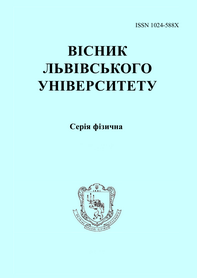DOI: https://doi.org/10.30970/vph.58.2021.61
Photoionization modeling of the low-metalicity H II regions surrounding continuous star formation.
I. Koshmak

| Visnyk of the Lviv University. Series Physics
58 (2021) ñ. 61-71
DOI: https://doi.org/10.30970/vph.58.2021.61 Photoionization modeling of the low-metalicity H II regions surrounding continuous star formation.I. Koshmak |  |
This paper presents an approach to modeling the ionization structure of low-metalicity H II regions around areas of continuous star formation. This method is based on multicomponent photoionization modeling of these objects, which takes into account their complex structure formed by the effect of superwind from the central region of star formation. The complex structure of H II regions can be divided into internal and external components. The internal components correspond to the region of free expansion of the superwind and the superwind cavity, respectively, and the external ones to the dense gas shell compressed by the direct shock wave of the superwind and the hydrodynamically undisturbed outer part of the H II region, where most of the observed strong emission lines are formed. The simulation components were calculated under the assumption of spherical symmetry. Photoinization of the gas was caused by ionizing quanta of both direct and diffuse ionizing radiation. The fluxes of this radiation were calculated during modeling using radiation transfer equations that take into account all the important processes in the H II region that cause this transfer. For the region of free expansion of the superwind, the input spectrum of ionizing radiation, the velocity of the superwind, and the chemical abundance were determined using models of evolutionary-population synthesis in the region of continuous star formation. During photoionization modeling, the distributions of electron temperature and density in the external components were obtained as a solution of the energy balance equation. The stopping criterion for evolutionary modeling was the condition of equality of pressure at the boundary between the third and fourth components. An evolutionary grid of multicomponent low-metalicity models of H II regions around the regions of continuous star formation was calculated, which were compared with the observed data.